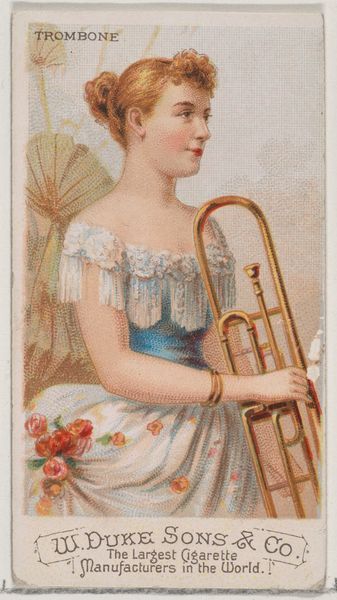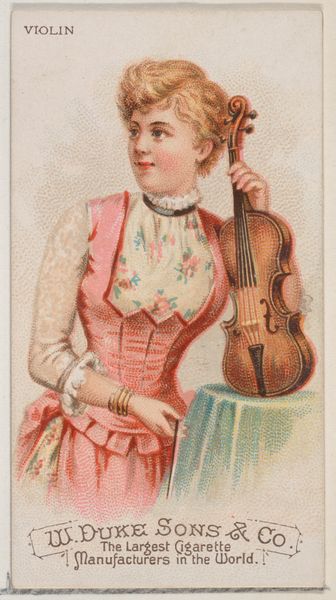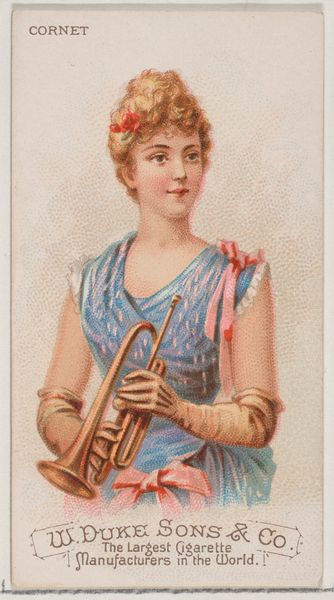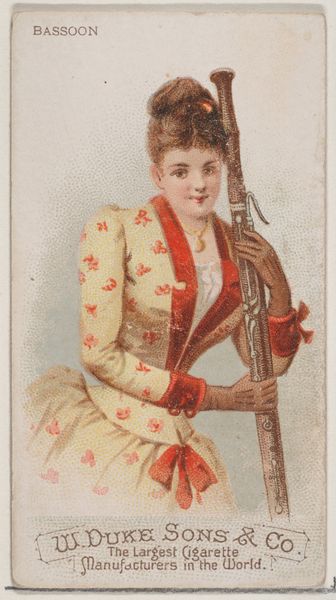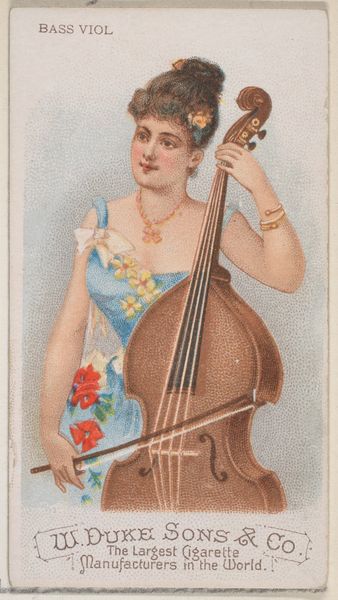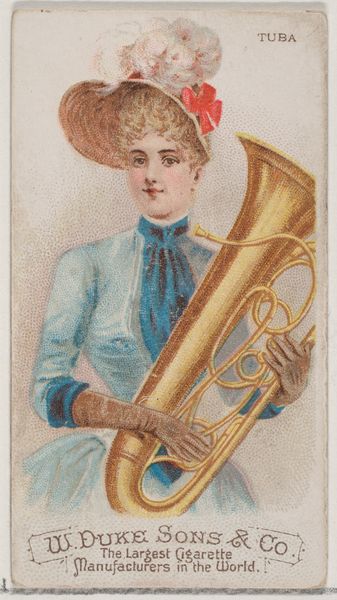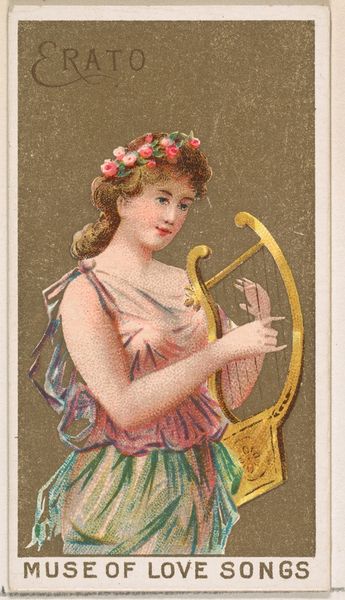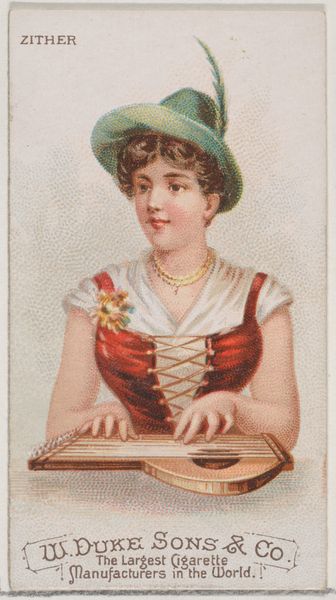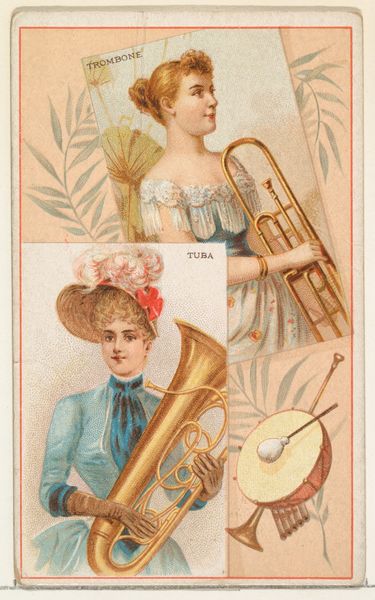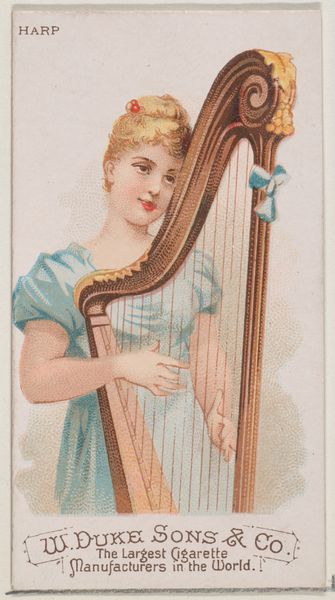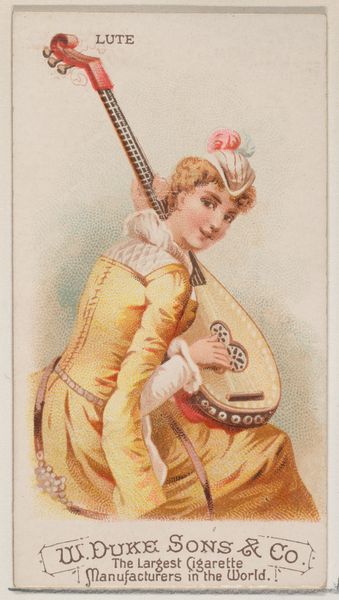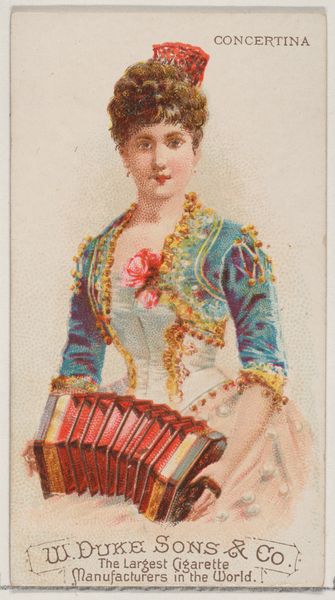
Lyre, from the Musical Instruments series (N82) for Duke brand cigarettes 1888
0:00
0:00
drawing, print
#
drawing
#
toned paper
# print
#
oil painting
#
portrait reference
#
coffee painting
#
men
#
animal drawing portrait
#
portrait drawing
#
watercolour illustration
#
musical-instrument
#
portrait art
#
watercolor
#
fine art portrait
Dimensions: Sheet: 2 3/4 x 1 1/2 in. (7 x 3.8 cm)
Copyright: Public Domain
Curator: Here we have "Lyre, from the Musical Instruments series (N82) for Duke brand cigarettes," dating back to 1888, currently held at the Metropolitan Museum of Art. Editor: What immediately strikes me is the romantic idealism conveyed through the woman's soft gaze and the gentle curves of the instrument. It’s quite lovely. Curator: Absolutely. Note how the artist uses delicate watercolor to render the woman's features and the details of the lyre. The composition is also noteworthy: the woman’s form mirrors that of the lyre, creating visual harmony, and, crucially, symmetry within the pictorial space. Editor: But that idyllic scene exists only because of the very real industrial process behind it. This card was created by W. Duke, Sons & Co. to market cigarettes. It speaks to a mass-production process designed to promote consumption habits and tie them to concepts of beauty and artistry. Curator: An astute point. It highlights the dual nature of the object: it's both an aesthetically pleasing image and a mass-produced advertisement. The subtle tonality creates an illusion of depth, contrasting with the inherent flatness of the printed medium. Editor: Precisely. This little card provides insights into labor, consumption, and the intersection of art and commerce. The base materials - paper, ink - connect it directly to tangible economies, not merely transcendent art. Curator: The series aims to associate the glamour and artistry associated with musical instruments and a sort of elite sophistication to their brand. The use of classically derived imagery invites one to regard the product as embodying enduring values. Editor: Yet this romantic visual is designed to cloak the less romantic realities of industrial production and advertising of tobacco. Consider the labor conditions involved, the sources of material, all masked beneath that soft glow. Curator: A valuable counterpoint, one that illuminates both the intentional artistry and the socio-economic context in which it was created. It serves as a bridge connecting aesthetic appreciation and a larger historical narrative. Editor: I agree, understanding that duality adds depth to any consideration of a small everyday item like this.
Comments
No comments
Be the first to comment and join the conversation on the ultimate creative platform.
